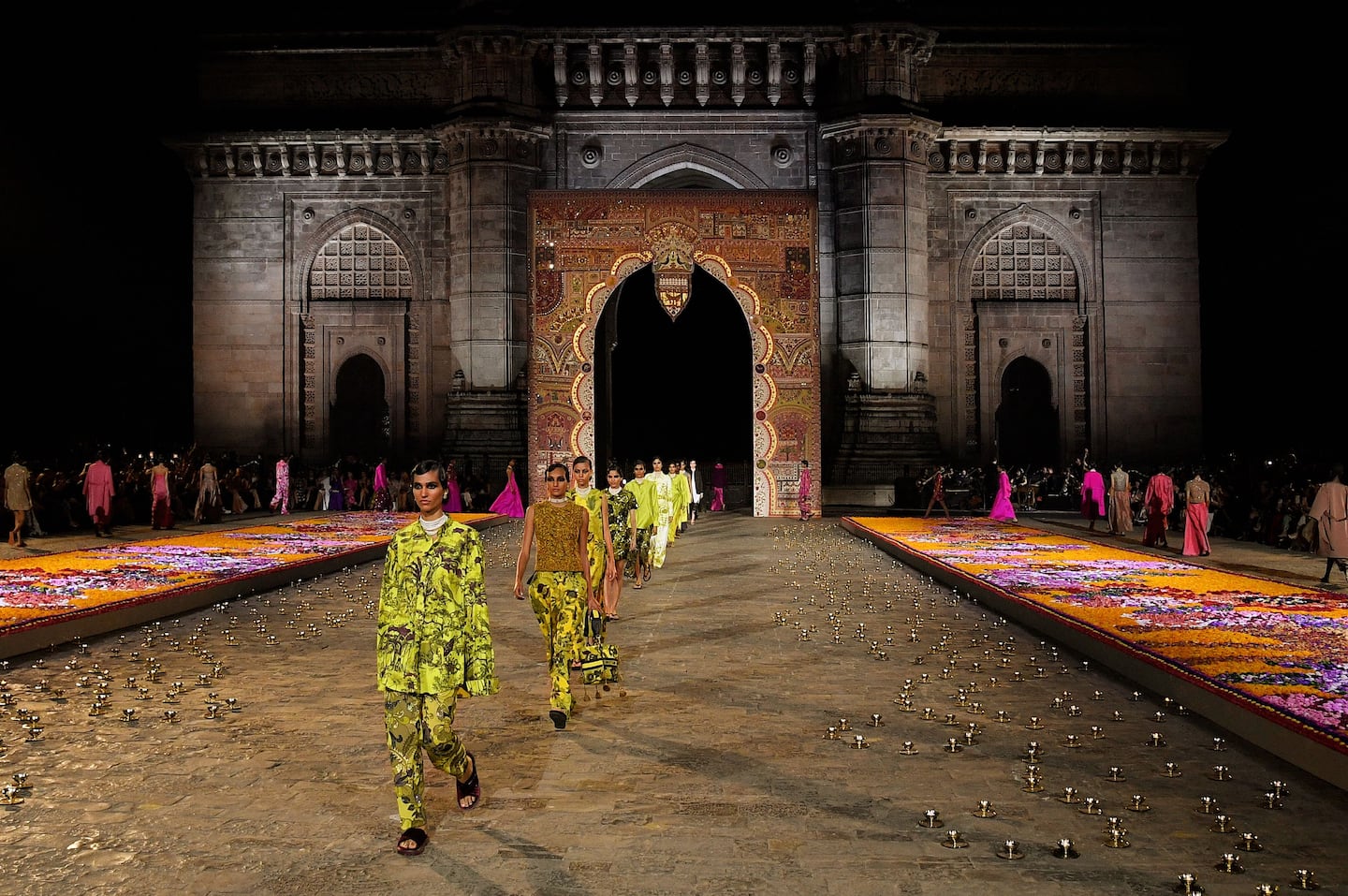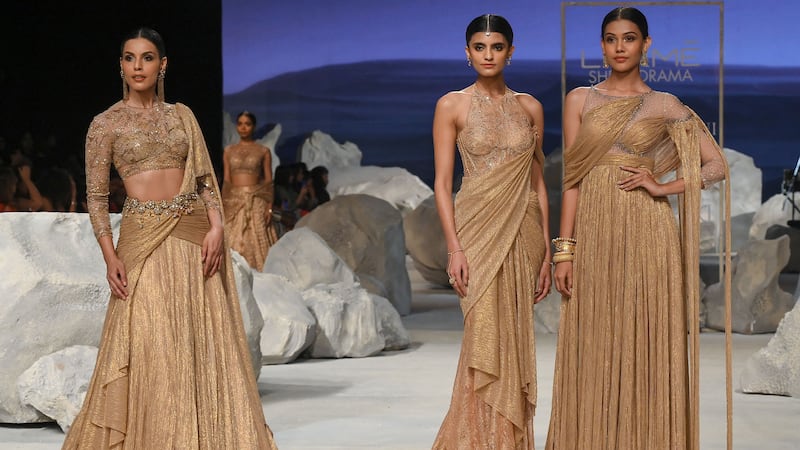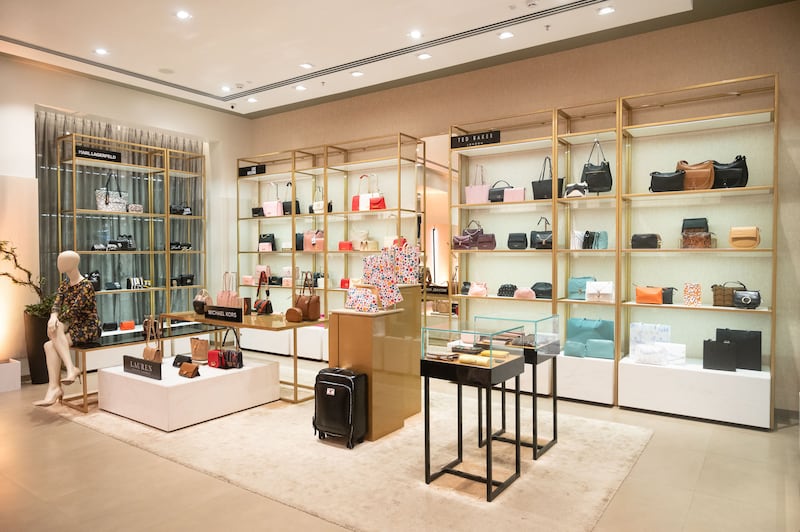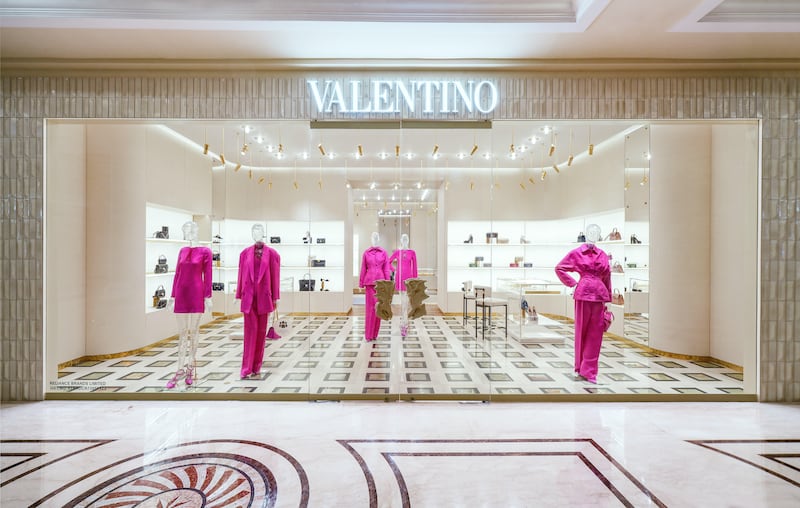
The Business of Fashion
Agenda-setting intelligence, analysis and advice for the global fashion community.

Agenda-setting intelligence, analysis and advice for the global fashion community.

Christian Dior will stage a fashion show in Mumbai today, presenting a collection of lavish garments referencing, among other things, traditional Indian silhouettes and embroidery made by local artisans.
“This is [Dior creative director Maria Grazia Chiuri’s] way of giving credit where credit is due,” said Nonita Kalra, editor-in-chief of Indian multi-brand e-commerce major Tata Cliq Luxury and former head of Harper’s Bazaar India, referring to Dior’s ongoing collaboration with the Chanakya atelier and the wider practice of luxury brands sourcing fine handwork from India.
Historically, some western brands have shrouded their Indian suppliers in secrecy, while others have faced criticism for undervaluing local artisans. In this context, some see Dior’s bold marketing manoeuvre as a step in the right direction. But it has also raised expectations that the first-of-its-kind show could represent something greater than a long-overdue nod to India’s contributions to the luxury supply chain.
“I understand Dior has a very strong connection with India, but there is also the power and what the world sees as the potential of the Indian luxury consumer, which is playing a major part here,” says Indian fashion influencer and content creator Masoom Minawala.
ADVERTISEMENT
India has been touted as a “bright spot” in an otherwise downbeat global economic forecast by the International Monetary Fund and is expected to be the world’s fastest-growing major economy this year. In light of this and similarly upbeat forecasts for India’s wealthiest consumer demographic, observers have asked whether Dior’s choice of location could be a watershed moment for the local luxury market.
Luxury in India is clearly gaining momentum, but sceptics are quick to point out that industry leaders have proclaimed a watershed moment to be imminent on several occasions in the past, only to be largely underwhelmed. The results simply didn’t measure up to expectations for a market of India’s scale, dynamism and potential.
Will this time be any different?
If nothing else, Dior’s extravaganza should help galvanize other brands into action, encouraging them to up their game in India. Many will already be watching the market closely, given its outlook.
Bain & Company recently identified India as a “rising star” for the global luxury goods industry, predicting that spending by Indian consumers will hit €25 to €30 billion ($26.8 to 32.2 billion) by 2030, up from less than €8 billion last year.
The management consultancy credited the more than trebling of the market to “increasing interest and evolving attitudes and behaviours among young [Indian] customers towards luxury goods.”
However, there is an important caveat buried in this impressive growth figure. Bain predicts that the majority of luxury spending by Indians will happen outside the country.

This helps explain why Indian designer brands like Sabyasachi and Anita Dongre are opening stores in New York and Dubai and why European brands have started to do more to cater to wealthy Indian expats, entrepreneurs and tourists in cities like London, Paris and Singapore. But where does this leave the domestic market?
ADVERTISEMENT
To put it into perspective, luxury spending in India itself will remain smaller in the short term than in international markets which are significantly smaller in population but more mature in character.
In Japan, for example, luxury spending was three times higher last year than the combined spending of Indian consumers at home and abroad. And while few luxury executives expect India to come anywhere close to the scale of big-league markets like China or the US in their lifetime, Bain’s projection does suggest that its share could increase significantly if it remains on a similarly strong upward trajectory beyond 2030.
Most luxury brands won’t be put off by the comparatively modest rewards they reap before then, analysts suggest. Brands and their local partners will continue to invest with the expectation that any short-term pain associated with this complex and challenging market will be more than offset by long-term gains.
“Having just two to three [mono-brand outlets in India like many foreign fashion and jewellery brands currently have] is nothing. ... If you don’t have scale, your overheads just don’t make sense, and you need a certain quality of overheads to be able to grow the business,” said Mumbai-based Neelesh Hundekari, partner and head of fashion and luxury for Asia-Pacific at consultancy Kearney.
To get a sense of the scale of the opportunity, he suggests, you need to compare the relatively tiny retail footprint of western brands — brands like Dior, for example, have just one store in Mumbai and another in New Delhi — with that of local jewellery brands. “Tanishq has more than 400 stores [in India], and a turnover of over 15,000-20,000 crore rupees ($1.8 billion-$2.4 billion) selling an expensive product. Now that’s scale.”
Global luxury brands continue to be challenged by many factors in India including limited suitable retail infrastructure, high import duties and operational complexities ranging from a bureaucratic regulatory environment to investment constraints, which make it difficult for foreign brands to do business without a local partner.
“Foreign brands look out for [Indian] partners who can handle the business and the practical day-to-day operations [through] joint ventures, franchises, or distribution arrangements,” said Devangshu Dutta, chief executive of retail consulting firm Third Eyesight, adding that it is not always feasible for brands to create a subsidiary focused solely on the Indian market.
In recent years, the Indian government has relaxed regulations for single-brand retailers like luxury brands. In 2018, it increased foreign direct investment (FDI) allowances from 49 to 100 percent for one route-to-market. Though local sourcing rules have been relaxed further since then, the conditions haven’t fundamentally changed the proposition for foreign luxury brands. There are still restrictions that make it difficult for most to take control of their destiny — or, for that matter, to take full advantage of the market.
ADVERTISEMENT
For example, for single-brand entities with FDI of over 51 percent, there is a stipulation that 30 percent of the value of goods sold must be sourced from India, preferably from MSMEs (micro, small and medium enterprises), cottage industries and artisans. It is unclear whether the embroideries and other handwork produced by India-based artisanal ateliers like Chanakya and Les Ateliers 2M for brands such as Dior, Hermès, Gucci and Prada count toward this. But even if they do, it is unlikely they will reach that threshold anytime soon.
Another challenge foreign brands face is that most don’t cater to the full range of aesthetics and silhouettes that Indian consumers desire, as local wardrobes often combine traditional, western and fusion clothing categories.
Traditional clothing, such as saris and lehengas, is still the default choice for many Indian women. According to BoF and McKinsey’s 2019 State of Fashion report, traditional garments made up an estimated 70 percent of women’s apparel sales in 2017. Appetite for western styles is likely to continue to increase, but traditional wear still accounts for around 65 percent of the market share.
Western brands clearly need to do a lot more to localise their product offering and marketing campaigns if they want to get closer to fulfilling their potential in India.
Minawala, who regularly attends fashion weeks across Europe, says she has noticed a change in how the industry abroad perceives the Indian market and wants to forge deeper and more meaningful connections with Indian audiences. This is evident in capsule collections, like Louis Vuitton’s ‘India Exclusive Capsule,’ which was launched to coincide with the festive Diwali and wedding season. Last year, the brand also appointed Indian actor Deepika Padukone as its brand ambassador, its first from the country.

“Brands are making an attempt with capsule collections, as we have seen with the Bulgari mangalsutra, Jimmy Choo’s latest Shaan capsule for India [and so on] but we’ve not seen a super successful one yet. I think that’s because the understanding of the market is still shallow. The approach is on point because India is a product-centric market … but it cannot be treated as any other market. We have our peculiarities and [unique] characteristics,” said Minawala.
Other marketing efforts of this kind appear to be one-offs, like Swiss luxury watch brand Franck Muller’s limited-edition collection to mark the 75th year of Indian independence last year. But even the most straightforward of localisation strategies are not without risk.
Foreign brands walk a fine line when tapping local cultural references for local audiences. Not only do they risk hitting the wrong note or even causing offense, but they also risk looking inauthentic. Some have created discord with the company’s global brand identity and diluted the otherworldly heritage that attracted Indian customers to them in the first place.
This is where Indian designers often have the upper hand, suggests Kalra. “[Foreign luxury brands in India] haven’t created [sufficient] desire [yet]. Anita Dongre, Manish Malhotra, Sabyasachi, they all stand for something ... and are making clothes for your body type. Sabyasachi is creating a desire for [each product category and even for] his H&M collection that sold faster than anything ever, which also tells you that we will [even] wear western silhouettes [from local designers],” she said.
“The competition in ready-to-wear for international brands comes from Indian brands at one end and Zara at the other. And I don’t think it’s a market that they’ve cracked yet because [some customers] don’t find the price points attractive enough,” she added.
Besides bridal wear, another area where Indian designer brands excel is in the rapidly growing fusion category, which has seen them experiment with newer styles combining traditional and western elements.
However, western luxury brand executives who see these challenges as an excuse to keep skewing their India offer toward non-apparel categories, are making a mistake, insiders suggest.
Staff at some western luxury brand retailers in India say they have already started selling more clothing pieces than handbag and accessory items but that overall sales figures remain higher for the latter categories because of the higher average ticket price. Kearney’s Hundekari seems to believe that the stereotype of Indian consumers buying mostly accessories persists because of luxury brands’ missteps in the past.
While many wealthy Indian clients find the experience at western luxury brand stores perfectly comfortable and appealing, others feel it is intimidating. Brands don’t always meet the latter group’s expectations in terms of service, preferred language medium or available size range.
“Now [foreign] brands are becoming savvy and trying to create a non-intimidating retail environment [but until recently] they didn’t know how to cater to these customers [spending disproportionately] on jewellery … [One reason they spend more on that category is because] they’re more comfortable [and familiar with the experience and environment offered by Indian brands],” Hundekari said.
This dynamic has spurred luxury groups whose portfolios skew heavily toward jewellery, timepieces and accessories to bolster strategic partnerships. Richemont recently launched TimeVallée, an online multi-brand boutique in partnership with the Tata Group which will offer watches from brands like Cartier, Piaget and Jaeger-LeCoultre, and it will also open physical stores in India with Tata Cliq Luxury.
Another reason the merchandise mix in India is skewed towards accessories is that local brand partners have been risk-averse, suggests Nakul Bajaj, founder and chief executive of Darveys, an online retailer selling dozens of international labels such as Dolce & Gabbana, Ralph Lauren and Off-White.
“If you speak to the brands directly, you will realise why they send only bags or iconic items. It’s because the franchise holders in India would be more comfortable selling accessories because … they can carry [those items] over to the next season [whereas they can’t do it for clothing when there’s a size problem],” said Bajaj.
There are other less obvious growth opportunities too. Some analysts believe that, with careful planning and a sensitive approach, foreign luxury brands could get more mileage out of the country’s $50 billion wedding market.
“International brands could reimagine what an Indian wedding looks like, but you cannot make the bride wear a white gown [or go too far because] Indians don’t really want to compromise on the Indianness of the wedding,” said Ujjwal Gupta, manager at consultancy Red Associates.
If the high-growth nature of India’s luxury market is not immediately apparent in the footprint of mono-brand stores, it certainly is in their retail partners.
The Collective, an Indian multi-brand retailer controlled by Aditya Birla Group selling global luxury brands like Ferragamo, Emporio Armani, and Karl Lagerfeld, has long had boutiques in major metros like the National Capital Region cities of New Delhi, Gurgaon and Noida as well as Mumbai, Chennai, Bengaluru, Kolkata, Hyderabad and Chandigarh.

In the last two years, it has ventured deeper into India’s heartland with new stores in the northern cities of Lucknow and Ludhiana, and in the western city of Pune. The retailer said the response from these smaller cities has been “tremendous.”
“All of these stores are doing better than the initial assessment,” said Amit Pande, brand head of The Collective and International Brands at Aditya Birla Fashion & Retail (ABFRL).
“Since 2014-2015, almost 50 percent of our [online] turnover has come from non-store towns,” Pande added. When the company opened in Lucknow during the pandemic, the marketing team contacted 500-600 of their existing customers from the catchment area to entice them to the launch.
The Collective’s recent growth figures chime with the wider recovery of the Indian luxury market as the negative impacts of the pandemic steadily recede. Pande says that it recorded 85 percent sales growth year-over-year in business in January and that together with other “super-premium brands” in the group, it recorded a 43 percent revenue growth for its third quarter ended Dec. 2022.
“Next year’s line-up is looking even stronger,” said Pande, adding that in the next six to eight months, the company plans to open four more The Collective stores in Mumbai and its suburbs.
The store’s parent company ABFRL also made waves when it announced that it was entering into a partnership with Galeries Lafayette to open branches of the luxury Parisian department store and an e-commerce platform in India.
“This is a coming-of-age moment for Indian luxury. India is now home to a generation of young and affluent consumers with global exposure, who are willing to spend on the finer things in life,” said Ashish Dikshit, ABFRL managing director. The company recently opened a store for Ted Baker in Mumbai, Fred Perry in Noida and expanded other stores in metro cities (those with a population of over a million).
ABFRL parent Aditya Birla Group is not the only company shifting into third gear. Its main rival in the luxury space, billionaire Mukesh Ambani’s oil-to-telecoms conglomerate Reliance Industries, has been making some big moves. In a bid to outdo one another, the two firms have invested in more than a dozen Indian designer brands in recent years. The former has linked arms with Rahul Mishra, Anamika Khanna, and Manish Malhotra, and the latter with Tarun Tahiliani, Sabyasachi, and the House of Masaba.
At Reliance Brands Limited (RBL), a unit of Reliance Industries, president and managing director Darshan Mehta has signed a deal to bring Balenciaga to India, and opened Valentino’s first store in the country in New Delhi’s DLF Emporio mall.
RBL, which is the local partner for brands including Burberry, Michael Kors and Bottega Veneta, is also building a luxury mall. Jio World Plaza will be located at the group’s vast new cultural and commercial hub in Mumbai’s Bandra Kurla business district, Jio World Centre. According to a 2022 Reuters report, the hub is being developed at the cost of more than $1 billion, and the mall will house brands like Versace, Balenciaga, Hermès, Louis Vuitton, Tiffany, and Dior.
Notably, the hub has already hosted the opening and closing acts for the latest edition of Lakme Fashion Week. It also includes The Nita Mukesh Ambani Cultural Centre, an extensive arts and culture space due to launch on Mar. 31 with an exhibition curated by Hamish Bowles showcasing over 140 pieces of historical fashion documenting India’s impact on the global industry.
But apart from a few high-profile retail developments like these, there is still a dearth of shopping districts and malls suitable for luxury. This means brands must be more flexible than they typically are elsewhere.
“In Palladium [mall] in Mumbai, there is a Burberry store right opposite Zara. It would be considered a sacrilege somewhere else, but … it’s hard for luxury brands to get the kind of footfall as Zara. If you create an exclusively luxury mall, you will simply not attract that kind of footfall,” said Hundekari.

Many of the malls opening in India are, therefore, hybrid spaces, with luxury, premium and mass-market brands under the same roof. In February, developer Phoenix Mills opened its new mall in Ahmedabad, which will house over 250 brands, including Coach, Kate Spade, and Hugo Boss. It plans to expand further with new malls in Bengaluru and Pune, in the next few months.
The need is so great that there are few corners of the country that seem to be off-limits for investors. Earlier this year, Emaar Group, the developer behind the UAE’s Dubai Mall, announced plans to open the Mall of Srinagar in a $60 million complex it would build in Kashmir, despite the instability and political tensions present in the disputed region in the far north.
“What’s … changed about the Indian market is access,” said Shana Randhava, senior vice president of new incubation ventures at Estée Lauder. “[In the beauty sector it is] Nykaa that has been incredibly important in making beauty (brands) accessible beyond just tier one, two [cities].”
About five years ago, buying a dress for 50,000 rupees (around $600) usually called for a consultation with friends or family, said Mehta of RBL, in a report by The Voice of Fashion, an RBL-owned publication. But not anymore.
Things have moved on so far that even “a branded polo shirt, a hoodie or a sweatshirt from a luxury brand is ‘grab and go’ for a large volume of people,” he added, citing a mindset shift among a group of Indian consumers that have become accustomed to spending a similar amount every couple years on a smartphone upgrade.
In a market like India with high levels of deprivation and inequality, the bifurcation trend currently sweeping the global fashion industry is certainly relevant.
But even though inequality is rising, with the richest one percent of the country’s 1.4 billion people owning over 40 percent of its total wealth, according to Oxfam, companies remain focussed on the top 400-500 million consumers who can afford some degree of discretionary spending.
At the very top of the income pyramid, the wealthy have been relatively insulated from both the pandemic and the global economic downturn and are now buying big-ticket items from jewellery to luxury cars.
At Mercedes Benz, which saw a 41 increase in sales of its cars in India in 2022, local managing director Santosh Iyer told the local media that he is chasing double-digit growth this year and is focusing on the very “top end of the luxury car market where demand is high.” Meanwhile, Tata-owned Titan, which owns jewellery brands like Tanishq and Zoya, posted an impressive 35 percent year-over-year revenue growth figure in FY22.
The optimism across the Indian luxury market is underpinned by rapidly growing wealth among those who were already affluent and members of the middle class moving up the income ladder. The number of high-net-worth individuals (US dollar millionaires) in India is expected to increase 77 percent between 2021-2026 to 1.41 million people, according to a global wealth report by Knight Frank.
But this doesn’t mean there aren’t opportunities in the accessible luxury sector. Given the rise of the so-called ‘HENRY’ (high earners, not rich yet) segment of the Indian market, analysts are optimistic about bridge-to-luxury brands that have already established themselves there.

“[This consumer group] wants to taste a luxury product. They might not purchase a Louis Vuitton, but they would definitely want to purchase [upmarket denim or a diffusion line item from] Calvin Klein,” said Anul Sareen, a senior research analyst at Euromonitor International.
According to The Collective’s Pande, the Indian luxury consumer has matured rapidly over the decade and a half that the retailer has been in business, with a large proportion of consumers moving away from flaunting logos and wearing conspicuous products from big heritage brands.
“Over time, there [has come to be] an understanding of the finer nuances of what makes something truly a luxury,” Pande said, noting the newer, niche brands The Collective has added to its stores, like Italian brand GCDS and swish denim maker Tramarossa, to tap into that change.
“In 2013, about 70 percent of our customers used to be single-brand customers. Today, that number has fallen to something like 15-20 percent. [With the majority of them] now buying across brands [it suggests] they’re making a statement for themselves and not just [blindly] buying into a brand’s philosophy,” Pande said.
Indian designers have also noticed a change in what local customers gravitate towards. Kolkata-based designer Anamika Khanna says they are looking to express their individuality and learn more about how their clothes are made. “They are okay to set their own standards and are not scared to experiment at all,” she said.
Improved internet connectivity and the popularity of Instagram, Facebook and YouTube means more Indians now have access to global fashion trends.
“When the Squid Games came to Netflix, the sales of tracksuits rose [here in India]. When Emily in Paris came out, it started popping [up],” says Abhishek Maloo, senior director of customer, growth, marketing, and operations of fashion at Indian e-commerce giant Flipkart. “[Whatever] is happening [globally] today, it starts cropping up on our platforms in a week’s time.”
That may be the case, but Bollywood stars and other Indian celebrities still reign supreme across most fashion categories as the main sales driver. Capturing that duality will be key.
Going forward, success for luxury brands will be a factor of knowing when to prioritise the local over the global dimension and when to do the opposite. And perhaps more importantly, knowing how to effectively mix the two in ways that appeal to increasingly discerning customers in this confident, complex and connected luxury market.
Local streetwear brands, festivals and stores selling major global labels remain relatively small but the country’s community of hypebeasts and sneakerheads is growing fast.
This week’s round-up of global markets fashion business news also features Senegalese investors, an Indian menswear giant and workers’ rights in Myanmar.
Though e-commerce reshaped retailing in the US and Europe even before the pandemic, a confluence of economic, financial and logistical circumstances kept the South American nation insulated from the trend until later.
This week’s round-up of global markets fashion business news also features Korean shopping app Ably, Kenya’s second-hand clothing trade and the EU’s bid to curb forced labour in Chinese cotton.